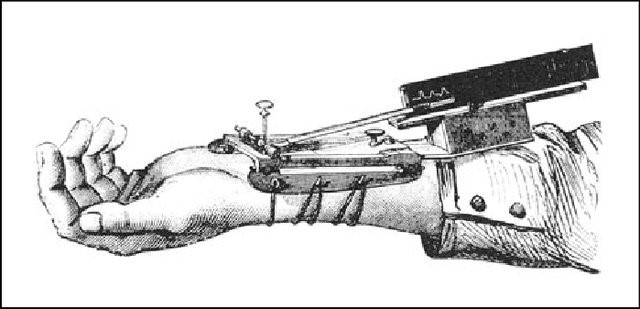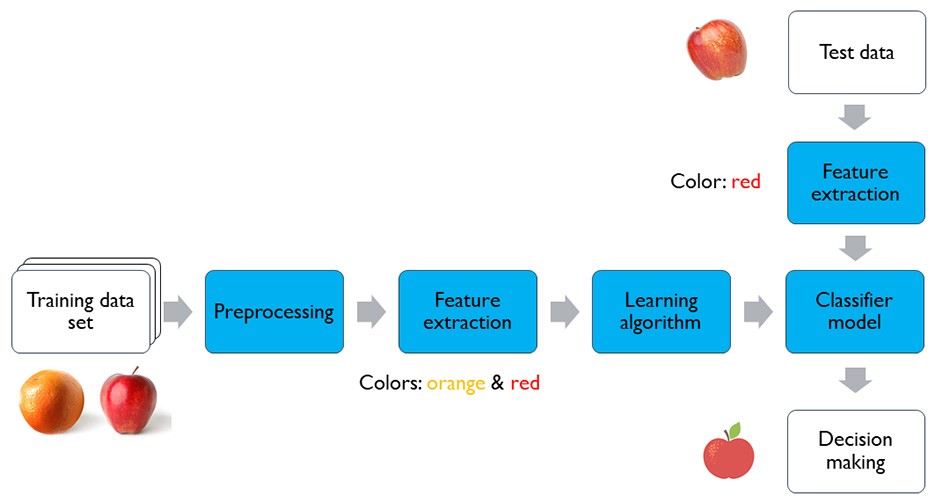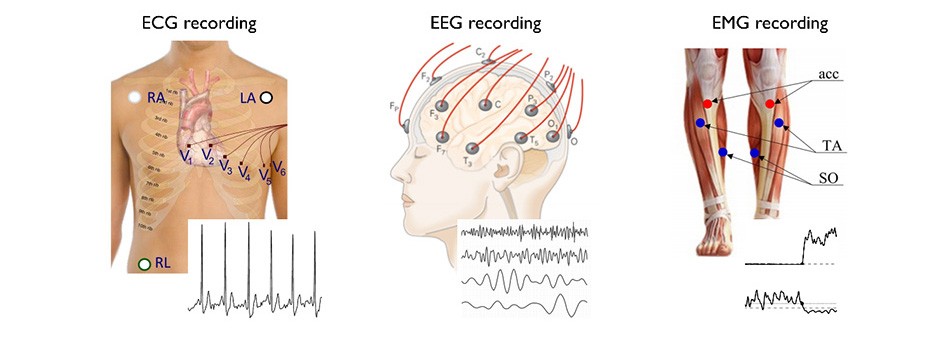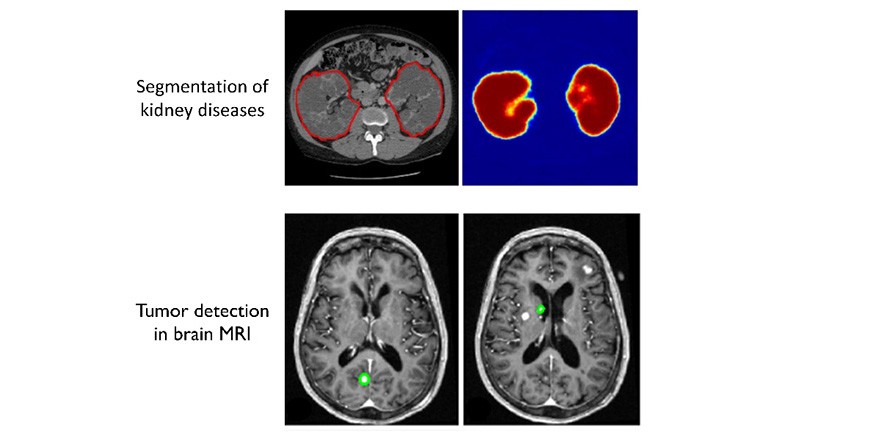Hamid Ebrahimi is a PhD candidate in Mechanical Engineering. Hamid obtained his bachelor’s degree from Ferdowsi University of Mashhad, and completed his master’s degree at K.N. Toosi University of Technology. Hamid co-developed a novel laser-based bioprinter during his PhD, which could potentially be used to print organs for organ transplantation. Hamid has over five years of teaching and R&D experience in dynamic system modeling, optics, computational fluid dynamics, bioinformatics and tissue engineering.
Blog post
Artificial Intelligence: could it be a new version of family doctor?
 Erasistratus the Physician examines the pulse and discovers the love of Antiochus for Stratonice by Benjamin West (1772)
Erasistratus the Physician examines the pulse and discovers the love of Antiochus for Stratonice by Benjamin West (1772)
Centuries ago, discovering a patient's illness just by examining the wrist pulses was a miracle performed by experienced physicians such as Galen, Avicenna and Erasistratus.
However, over the years of experience, researchers have noticed meaningful movements in wrist pulses in patients with different diseases. Accordingly, the two issues of recording vital data and analyzing them became extremely important in medical science. This was the starting point of human effort to create a field of science called pulsology.
 Earlier version of sphygmomanometer
Earlier version of sphygmomanometer
In pulsology, the invention of the sphygmomanometer was a spark to record electromechanical signals emitted from organs such as heart, brain, muscles, and so on. Such signals along with medical images have helped physicians and specialists to diagnose diseases. Despite this potential, the analysis of the data and the final diagnosis for treatment depended on the experience of the physicians.
In recent years, algorithm approaches have been developed to support decision-making and reduce human error in the diagnosis process. However, these methods have practical limitations for the different population groups (from different genders, age groups, and races).
The advent of artificial intelligence (AI)-based methods (specifically, machine learning) has eliminated the problems of the algorithm approaches and led to remarkable developments in the processing of medical signals and images. These methods are able to autonomously change their behaviour based on experience.
To get a better understanding of how AI-based methods work, let's commence with a simple example. Suppose we want to develop an automatic method to classify apples from oranges. Definitely, the first thing that comes to our minds is to differentiate according to the color of the fruits. Thus, the classification can be easily made by defining a linear threshold on their colors.
However, in most cases that we face on a daily basis, there is not just one effective parameter and even the effects of the parameters are not linear. Now, let's consider a more complex example, suppose you are going to invest in crude-oil stocks. For this purpose, estimating the price of the day can maximize your profit. But, the question is: what parameters are influential in the estimation?
Here are some of these parameters: the oil prices of the past few days, the weather conditions at the extraction sites, the political and economic conditions of the oil-rich countries, the possibility of war in the Middle East, and so on. As it is obvious, many parameters are non-linearly effective in determining the oil prices.
In order to describe the behavior of systems that are affected by many parameters, we need methods that can model these complexities. Artificial intelligence has the ability to create such a model that is very close to reality due to its non-linear nature.
AI-based methods can be categorized into three main techniques: classification (supervised learning), regression (supervised learning) and clustering (unsupervised learning). Regardless of the techniques, the following steps must be taken in order to use the mentioned methods:
- Data preprocessing;
- Extracting the appropriate features to clearly distinguish (for instance, color is a feature to distinguish orange from apple);
- Training the technique with a data set;
- And finally giving test data for the decision-making process.
 AI process for classification
AI process for classification
Due to the stated potential, AI can be widely employed in medical applications such as:
- Interpretation of electromechanical signals recorded from human’s organs:
- Electrocardiogram, ECG (heart signals)
- Electroencephalograph, EEG (brain signals)
- Electromyography, EMG (muscle signals)
- Interpretation of biomedical images recorded from human’s organs:
- Magnetic resonance imaging (MRI)
- Computed tomography (CT) scan
- Ultrasound imaging
AI in biomedical signal processing
The human body (e.g. heart, brain and muscles) comprises a complex network of subsystems that perform vital physiological processes. Such a performance can be recorded as electrical signals. Any disturbances in the organs’ electrical activity can indicate abnormalities in the functions. Therefore, a comprehensive analysis of biomedical signals such as ECG, EEG and EMG can provide useful information for the diagnosis of diseases.
 Leads placement of ECG (left, Leutheuser 2019), EEG (middle, Kandel et al. 2012) and EMG (right, Tao et al. 2015, Lith et al. 2018) and their recordings
Leads placement of ECG (left, Leutheuser 2019), EEG (middle, Kandel et al. 2012) and EMG (right, Tao et al. 2015, Lith et al. 2018) and their recordings
Cardiac diagnosis by ECG:
Electrocardiograms indicate the electrical activity of the heart and provide useful information about potential pathologies. Analysis of ECG signals, including heart rate variability and heart rhythm, can detect the presence of any abnormality. The use of artificial intelligence not only increases the accuracy and speed of the initial diagnoses, but also can take great steps in diagnosing diseases that were challenging with conventional methods, of which the followings can be important:
- Cardiac arrhythmias (atrial fibrillation, ventricular arrhythmias, cryoablation)
- Coronary syndrome
- Ischemia heart disease
- Mortality of patients with myocardial infarction
- Heart failure
Diagnosis of brain dysfunction by EEG:
The brain, as the command center, receives information from our senses and controls our thoughts and movement. Neurons are responsible for transmitting the data; and communication between them occurs by passing electrical current through. The electroencephalogram (EEG) measures the summation of electrical activities recorded on the scalp, primarily derived from neurons and the cortex.
These types of signals can give physicians very important information about how the brain works (like ECG). However, the conventional techniques could not significantly assist physicians with the diagnosis because of the complexity of the brain. In consequence, the need for artificial intelligence methods has increased due to the modeling of complexities with the methods such as artificial neural networks.
Using these methods, researchers in psychology and neuroscience have been able to obtain appropriate information in the early stages of diseases such as Alzheimer's disease, Parkinson's disease, Attention-deficit hyperactivity disorder (ADHD), and autism. Even they have gone a step further to develop devices that play a crucial role in improving our daily lives. For instance, the driver drowsiness detector, which can reduce the severity of accidents, uses these methods.
AI in biomedical image processing
Medical imaging is a non-invasive method that is significantly involved in improving the quality of diagnosis and treatment of the diseases. It can also lead to a better understanding and analysis of conditions in living organisms.
 Automatic segmentation of kidney disease (up, Sharma et al. 2017), Brain tumor detection and segmentation in MRI (down, Yu et al. 2014)
Automatic segmentation of kidney disease (up, Sharma et al. 2017), Brain tumor detection and segmentation in MRI (down, Yu et al. 2014)
AI can be an automated decision-making technique used efficiently in the processing and analysis of medical images. One of the advantages of using these methods is that they can automatically find non-obvious and complex relationships between the data in images. Using these relationships, the interpretation of the images will definitely be easier.
As AI has the ability to enhance biomedical image processing, these methods have been recently used to diagnose several diseases. The most important of which are the following:
- Diagnosis of breast cancer using Mammography;
- Polyp detection in Computed Tomography (CT) Colonography;
- Brain studies using MRI in:
- Alzheimer’s disease,
- Epilepsy,
- Childhood development,
- Autism,
- Effects of lithium treatment in bipolar illness,
- Kidney function using MRI;
- Prostate segmentation on CT and MRI Images.
The items listed above are a brief description about medical applications of artificial intelligence. Currently, the techniques have greatly contributed to diagnosis in the early stage. Given the rapid progress in the development of artificial intelligence methods, it is expected that in the near future these methods can diagnose diseases at the level of a physician. With this potential, they will increase the quality of human life and even save lives in cases where access to a qualified specialist is not possible.
About the author


